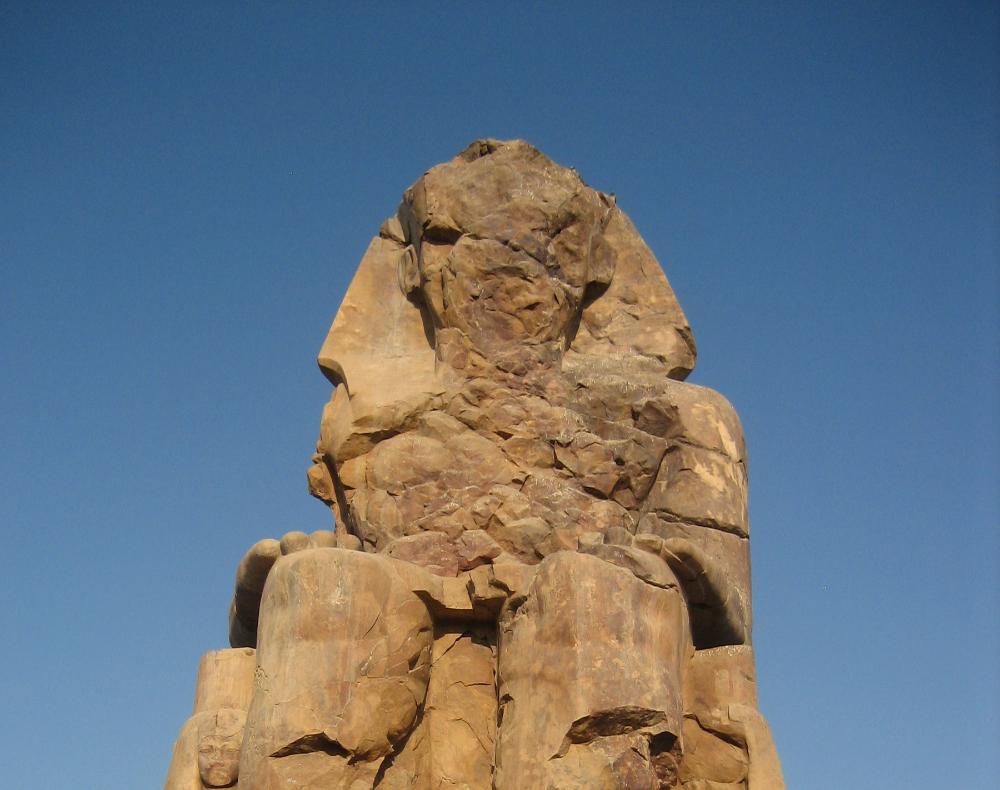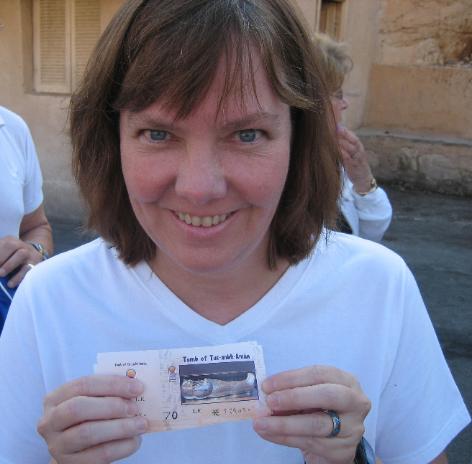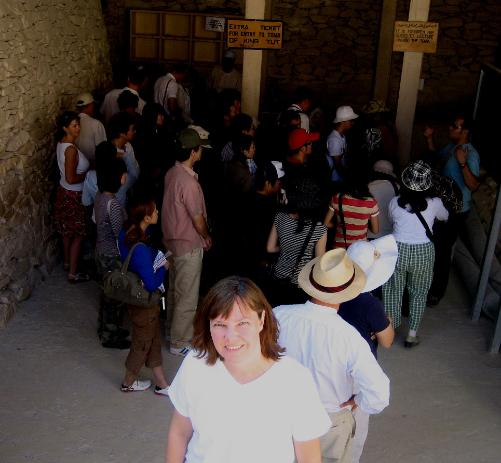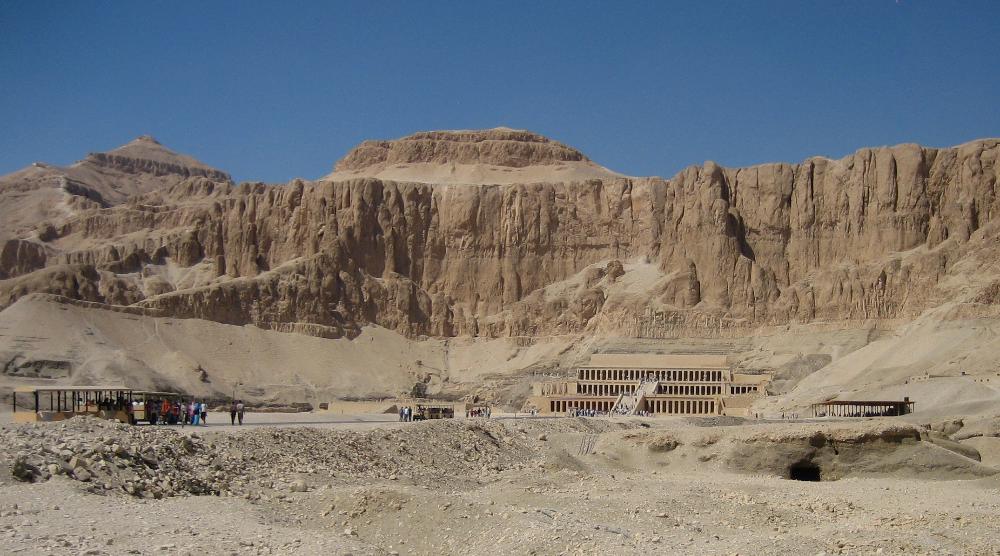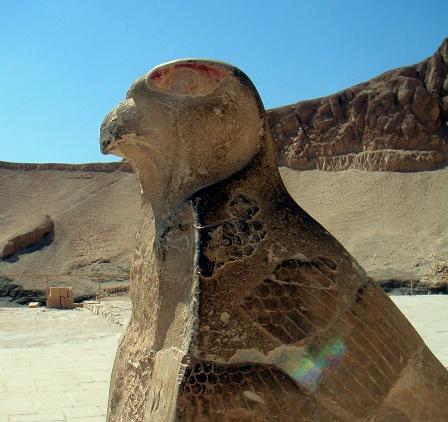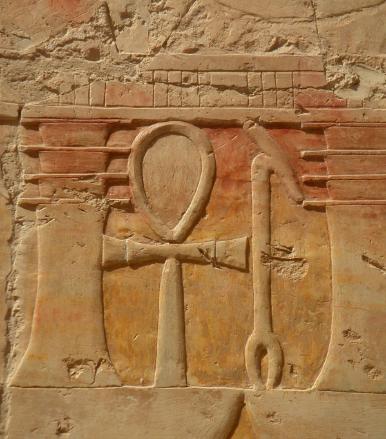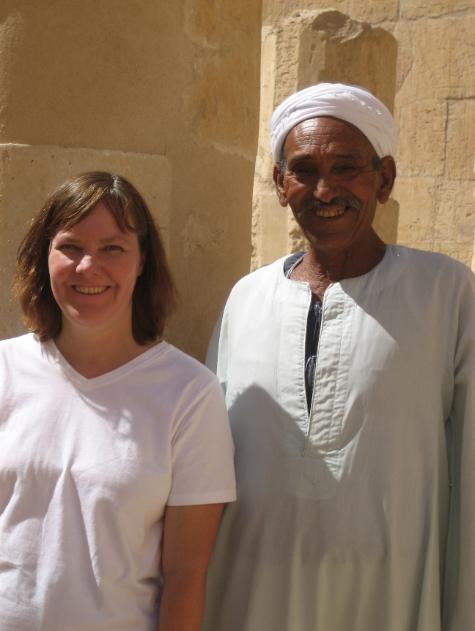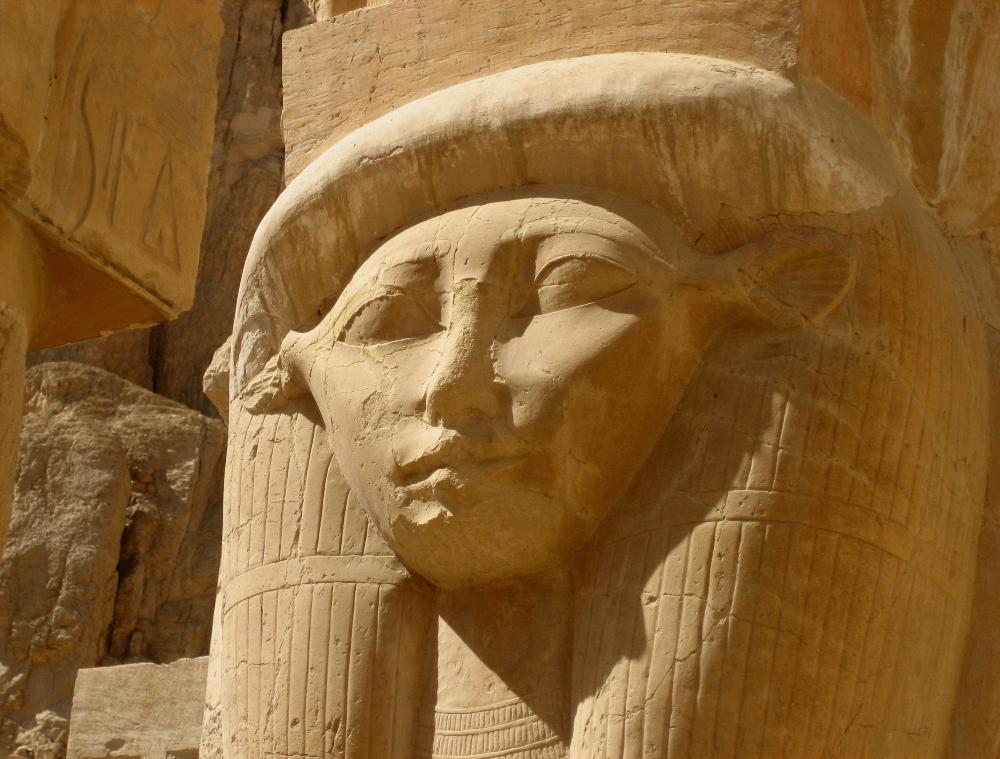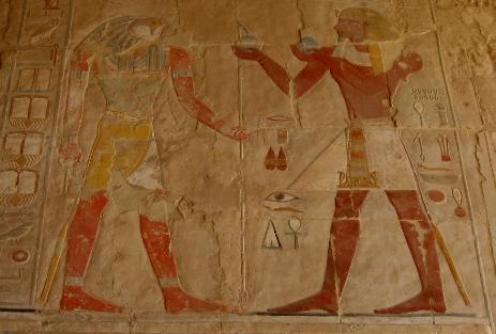
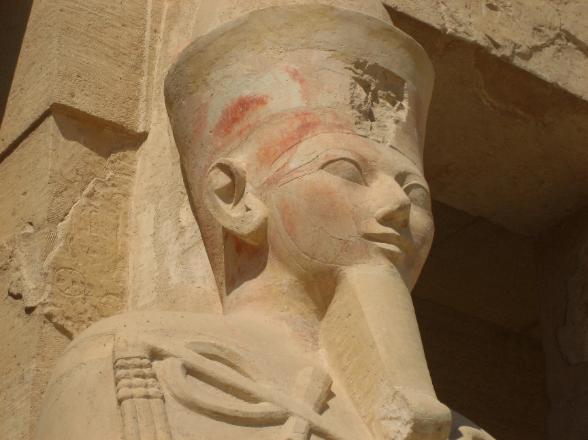
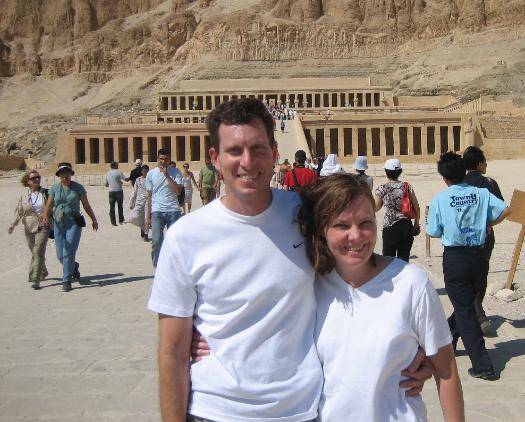

Where We Be
| Note the natural pyramid shape of the mountain under which the carefully chosen Valley of the Kings lies |
| On our way to the Valley of the Kings, we stop to see the Colossi of Memnon, two huge and eroded statues at the entrance to the West Bank |
| Valley of the Kings -- Luxor, Egypt |
| This is the dramatic setting for Queen Hatshepsut's temple. Without question she thought outside the box -- her temple looks nothing like any other. |
| Just happy to be here seeing these sights with our own eyes |
| In this statue, the female queen wears the fake ceremonial beard worn by all pharaohs |
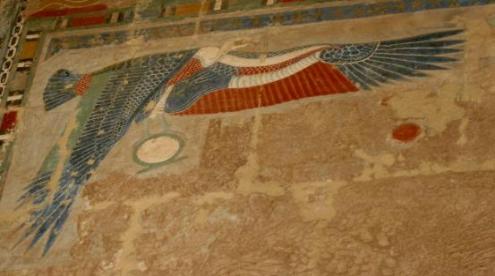
| This falcon stares at you balefully outside Hatshepsut's temple |
| The ankh, symbol of life, is a recurring theme at the temple |
| We were blown away by the brilliant colors and vivid renderings |
| Hatshepsut dedicated a small side temple to Hathor, the cow deity, who was a popular goddess of fertility, music, and joy |
| Robin may yet become an Egyptologist -- she's in heaven here! |
| Robin is very excited to have her ticket to enter King Tut's tomb. No photos are allowed past the entryway, so we have no inside pictures to share with you for this or any of the other tombs at Valley of the Kings |
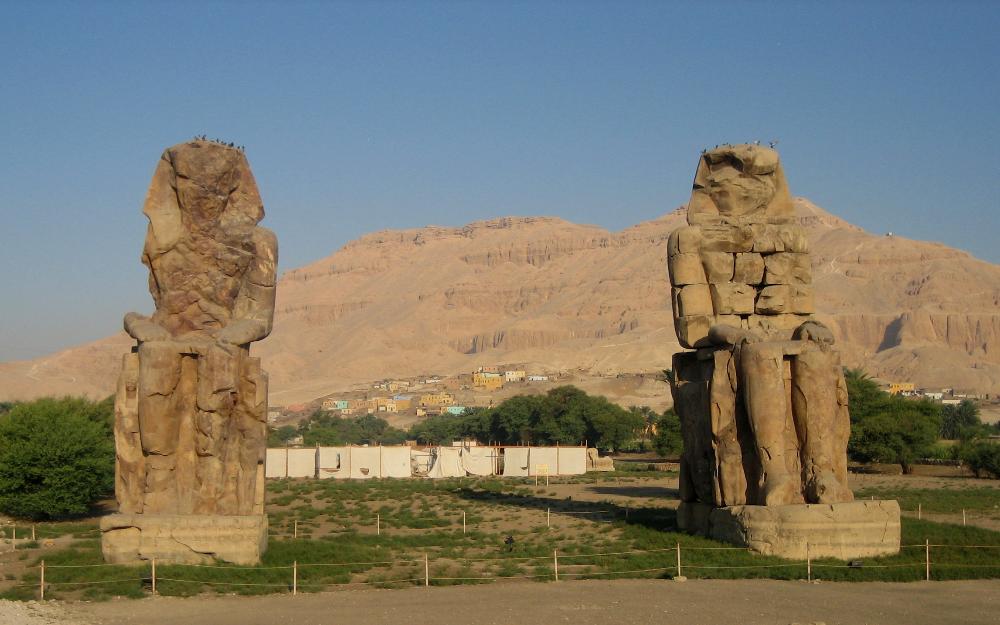
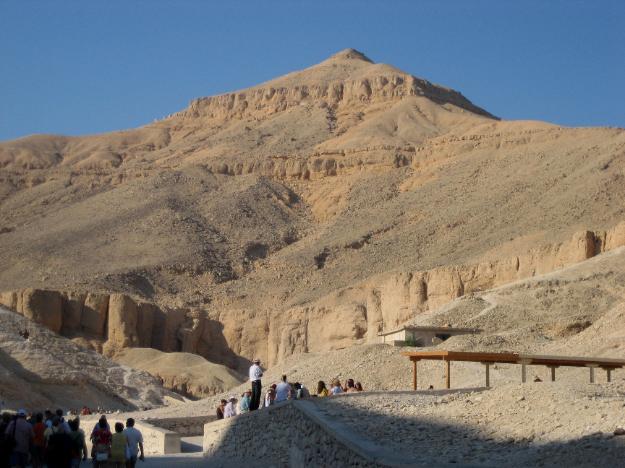
Luxor's West Bank is where the kings of ancient
Egypt were buried. Seeing these hidden Tombs
of the Kings is one of the highlights of any visit
to Egypt. We pay extra for the ticket to see King
Tut's tomb and visit it first. By comparison to
the other pharaohs’ tombs it is quite small, but
getting to see where the treasures of Tut were
first discovered is simply too cool to pass up.
Our ticket also allows us to visit three other
tombs, so we decide on those of Ramses I, III,
and IX. The remarkable colors and good repair
of these tombs make them memorable. They all
share common elements -- depictions from the
Book of the Dead, hieroglyphics, sarcophagi,
and so on -- so after three or four you're good.
Queen Hatshepsut's temple, by comparison, is
surprisingly different. Set dramatically against
the cliffs, it looks quite minimalist and modern
in its architecture. The three-tiered structure
has a broad staircase ascending up the middle
of the first two tiers. Our guide says if you took
the statues away, it could easily be a modern
edifice built into the rocks. Depicted on its
walls we see the story of Hatshepsut's virgin
birth. Her mother was said to have been
"touched by Ra," which helped to legitimate
Hatshepsut's claim to the throne of Egypt.
Egypt were buried. Seeing these hidden Tombs
of the Kings is one of the highlights of any visit
to Egypt. We pay extra for the ticket to see King
Tut's tomb and visit it first. By comparison to
the other pharaohs’ tombs it is quite small, but
getting to see where the treasures of Tut were
first discovered is simply too cool to pass up.
Our ticket also allows us to visit three other
tombs, so we decide on those of Ramses I, III,
and IX. The remarkable colors and good repair
of these tombs make them memorable. They all
share common elements -- depictions from the
Book of the Dead, hieroglyphics, sarcophagi,
and so on -- so after three or four you're good.
Queen Hatshepsut's temple, by comparison, is
surprisingly different. Set dramatically against
the cliffs, it looks quite minimalist and modern
in its architecture. The three-tiered structure
has a broad staircase ascending up the middle
of the first two tiers. Our guide says if you took
the statues away, it could easily be a modern
edifice built into the rocks. Depicted on its
walls we see the story of Hatshepsut's virgin
birth. Her mother was said to have been
"touched by Ra," which helped to legitimate
Hatshepsut's claim to the throne of Egypt.
| This Colossus looks all the more forbidding with its broken stone face |
